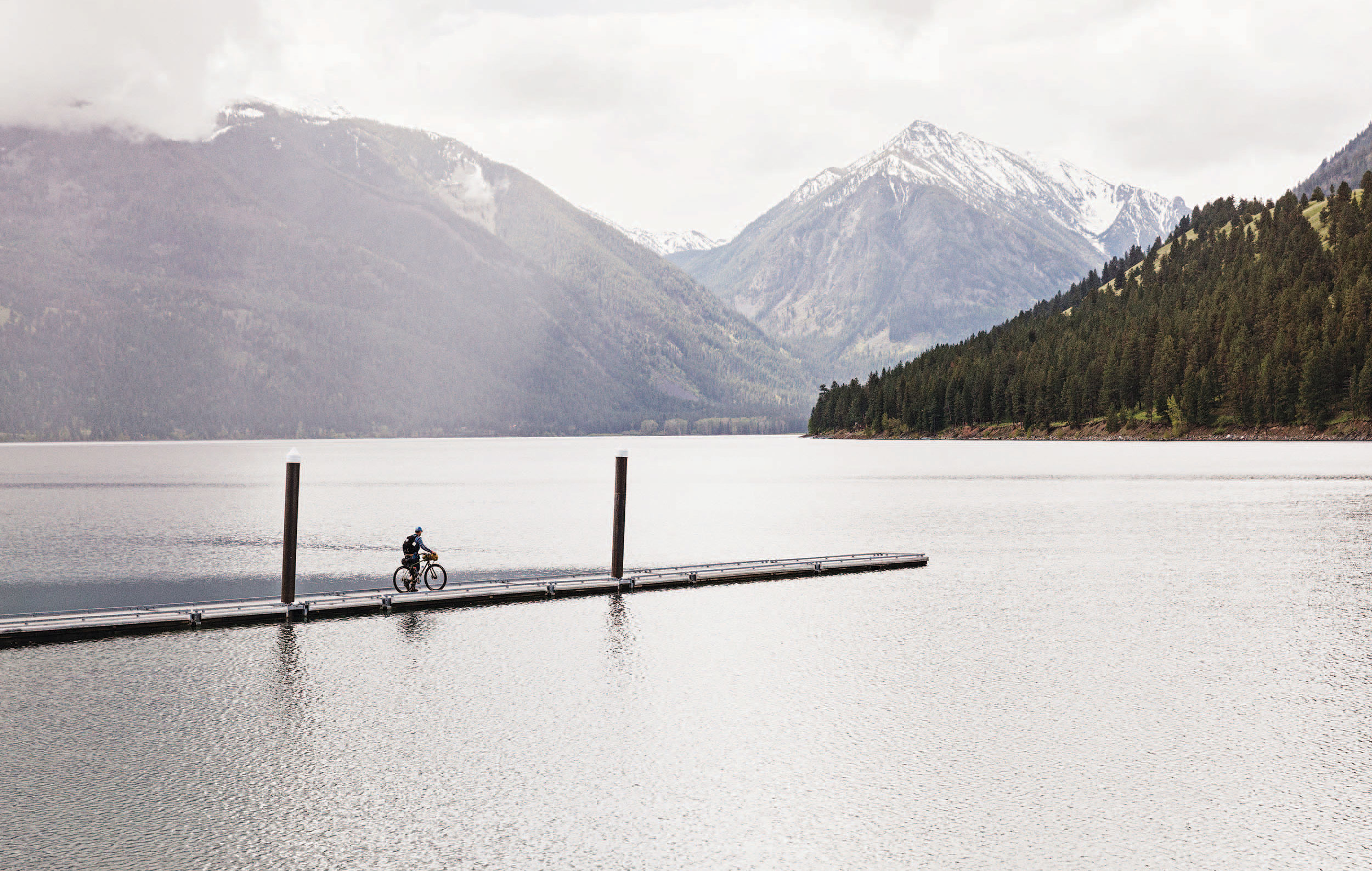
Come along as C&I takes readers on a tour of the Beaver State.
This time around Cowboys & Indians dedicates its July travel issue to the great state of Oregon.
Wallowa Mountains
When Travel Oregon came up with its award-winning Seven Wonders of Oregon ad campaign, it wisely made sure the Wallowa Mountains made it through the winnowing process for the final list. The wonder of this range in the Columbia Plateau of the northeastern part of the state is its natural beauty — it is, after all, known variously as America’s Little Switzerland and Oregon’s Alps. But it’s also wonder-worthy for its many outdoor attractions and special place in Western history.
Long before they became a tourist destination, the Wallowa Mountains were home to the Wallowa band of the Nez Perce tribe. In 1834, French-born Capt. Benjamin Bonneville of the U.S. Army, traveling through the Wallowas, ran into the Nez Perce on his way to Fort Walla Walla and developed a trading relationship with the tribe. After settlers invaded the land for gold, the Nez Perce, under Chief Joseph, took active measures of resistance, resulting in the Nez Perce War of 1877.
Chief Joseph, who was born in the Wallowa Valley, is the namesake of the town of Joseph, Oregon, which is nestled in the valley just a mile from Wallowa Lake. Once called Silver Lake and Lake City, the town was officially named after the great Nez Perce leader in 1879. In late July, Joseph puts on the Nez Perce Tamkaliks Celebration (this year, July 21 – 23) and the Chief Joseph Days Rodeo (July 25 – 30), but it’s also a hub of activity in August, when it hosts the Bronze, Blues & Brews Festival (August 11 – 12) and again in the fall when it stages Oregon’s Alpenfest (September 28 – October 1), complete with yodeling and alp-horn playing. Joseph is also one of the largest bronze-producing areas in the world. Visitors can tour the foundries and browse the life-size wildlife and Western sculptures that line Main Street.
The events and shops of Joseph don’t disappoint, but the real star here is the Oregon outdoors. At least 18 different peaks in the Wallowas rise above 9,000 feet, including Sacajawea Peak (9,838 feet) in the adventure-filled Eagle Cap Wilderness, which boasts 500 miles of marked trails and 52 lakes. To take full advantage of crown jewel Wallowa Lake, there’s the breathtaking and family-friendly Wallowa Lake State Park. Hiking and camping, horseback riding and go-carting, boating and fishing, water skiing and wakeboarding, white-water rafting in Hells Canyon (where you can explore historical Native American sites) — there’s so much to do outdoors in the Wallowas.
For a truly memorable view, take the Wallowa Lake Tramway to the top of Mount Howard; then stick around to take it all in from an outdoor table at the Summit Grill and Alpine Patio. There you can have an Oregon microbrew and a bite to eat while overlooking the lake and the wondrous peaks. josephoregon.com, traveloregon.com — Kristin Brown
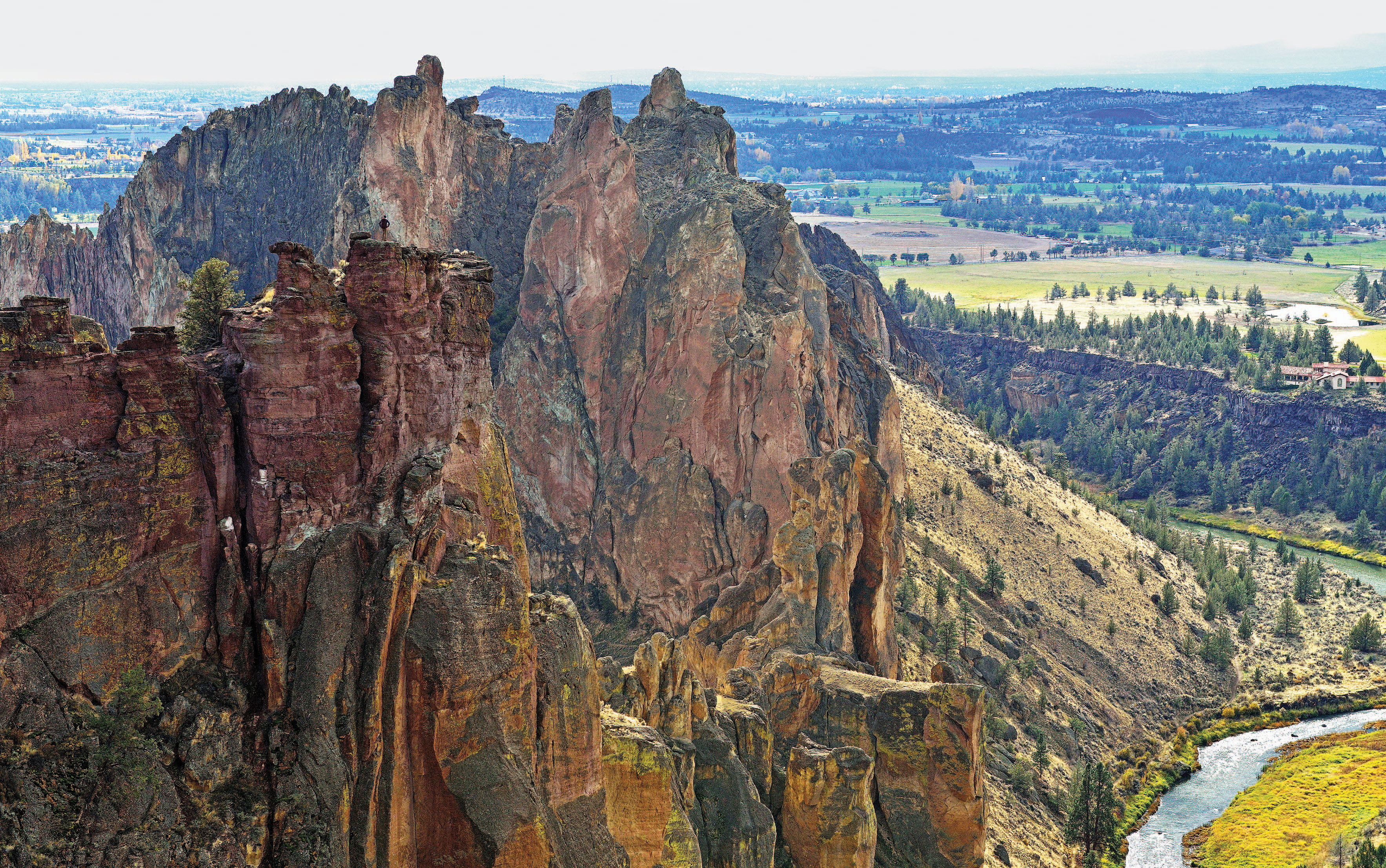
Smith Rock State Park
This is the kind of landscape that would look right at home in a classic western. You can just picture a posse on horseback chasing outlaws holed up among 600-foot-tall rock spires that look like a craggy cathedral with a river running through it.
There’s a ton of geology to thank for the dramatic, cinematic Smith Rock scenery: the eroding action of the Crooked River slowly cutting its way through eons of layers of rock, old ash and tuff formations, basalt lava flows, calderas, and lava chambers to make deep canyons, cliffs, and gullies.
But Smith Rock is beloved as more than a geologist’s paradise and super selfie backdrop: It’s a premier destination for fresh-air-and-sunshine activities. A 35-minute drive from the adventure gateway of Bend in Central Oregon, Smith Rock is widely considered the high-desert birthplace of the sport of rock climbing. The state park boasts several thousand climbs, more than 1,000 of which are bolted routes. It’s also a Mecca for hikers and mountain bikers (with many miles of trails to accommodate them, too) and campers. One of the best, if tough, hikes follows the Crooked River, climbs to the top of Misery Ridge for a 360-degree view from 3,360 feet, and finally takes you on a loop of the park.
Whatever you do in Smith Rock State Park, keep your dog leashed, your feet on marked trails, and your eyes and telephoto lens peeled for golden eagles, prairie falcons, mule deer, river otters, and beavers. (Note: Climbing closures are periodically in effect in areas where golden eagles nest within 1,100 feet.)
oregonstateparks.org — Dana Joseph
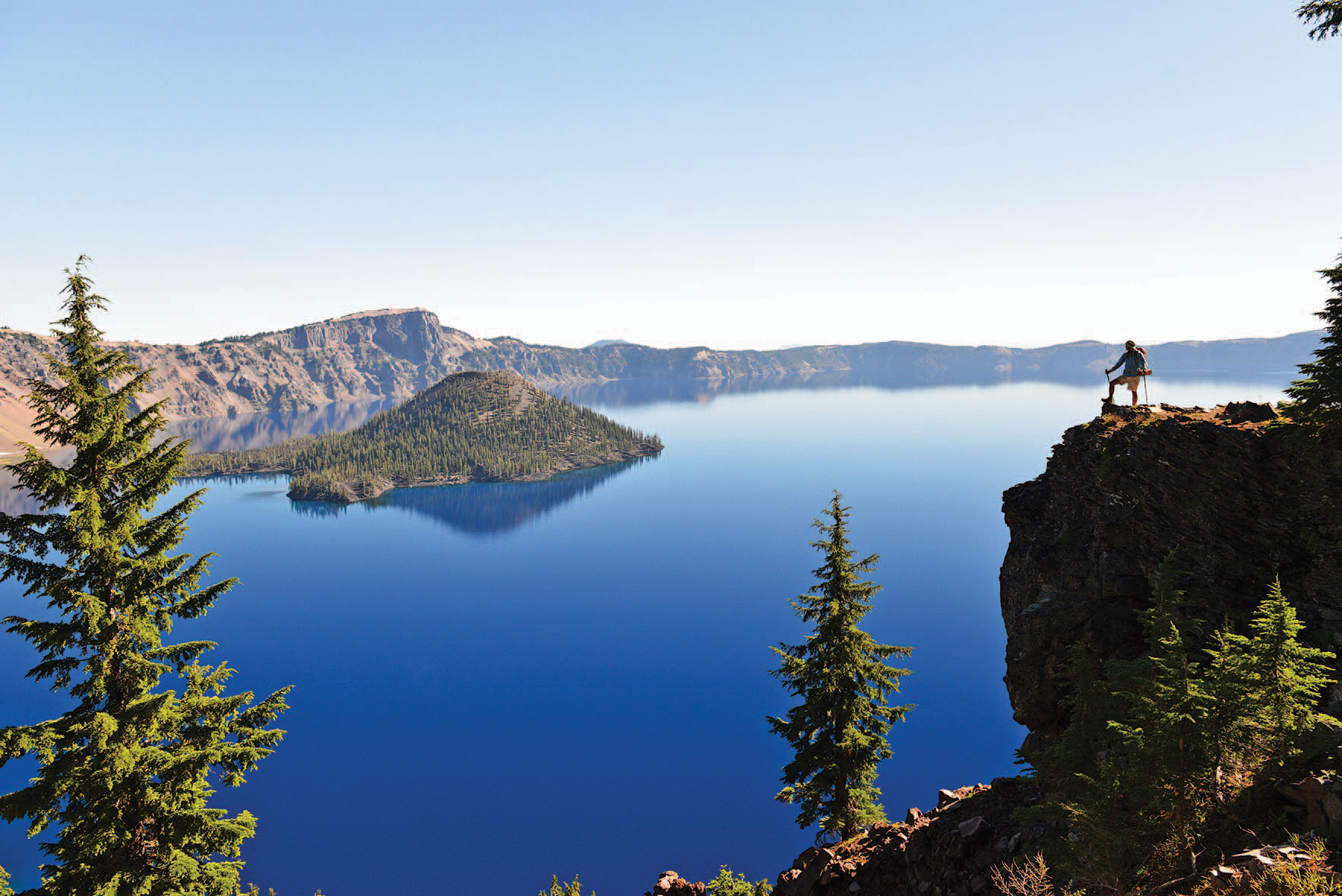
Crater Lake
Crater Lake National Park, established in 1902, has one of the most iconic views found in the American West — a wide lake encircled by cliffs and a single, conical island poking out from the middle. Originally known as Mount Mazama, an active volcano, Crater Lake now consumes the volcanic basin with the peak of the mountain resting as Wizard Island. It’s the deepest lake in the country and fed almost completely by precipitation, giving it a brilliant blue hue. But Crater Lake is more than an opportunity for splendid postcard-worthy pictures.
Open 365 days a year, the park is always accessible to visitors. Although some roads may be closed due to snow and the lake might be difficult to spot with low cloud coverage at times, camping and hiking are always options for the adventurous. The national park has two campgrounds and two lodges open in the summer season, but during the winter, only backcountry camping is permitted.
For a different view of the park, consider a volcano boat cruise, taking visitors around the lake. Or opt for the Wizard Island exploration trip for an opportunity to stomp around on the mysterious island at the center of the lake. Only available during the summer months, the tours offer a chance to get up close with the formations and geological wonders of the lake. nps.gov/crla, craterlakelodges.com — Victoria Mechler
Treetop Resort
Tucked away in the Illinois Valley of southwest Oregon, Takilma offers an experience unlike any other. Considered an artists’ haven, the small town is home to one of the country’s most incomparable destination resorts: the Out’n’About Treesort. It’s a bed-and-breakfast in the sky, made up of treehouse bungalows built on 36 acres of private pasture and woods bordering the Rogue River-Siskiyou National Forest. It’s a true oasis for owner and master builder Michael Garnier, a treehouse pioneer who has overseen custom builds all over the world.
And enjoying the great outdoors is exactly what this resort is all about. You won’t find a television in your luxury treehouse suite, but you certainly won’t be bored. There are plenty of what the resort calls “activitrees” to keep you engaged. Embark on horseback and river rafting adventures through the valley, hike along the nearby Redwood Coast, or sign up for any number of the resort’s workshops and courses, from treehouse construction to cooking up the perfect s’more. But the highlight of the property is the Mountain View Zipway — a zip-line course that takes approximately three hours to complete, ascends 75 feet in the air, and hits speeds up to 45 mph. treehouses.com/joomla — Holly Henderson
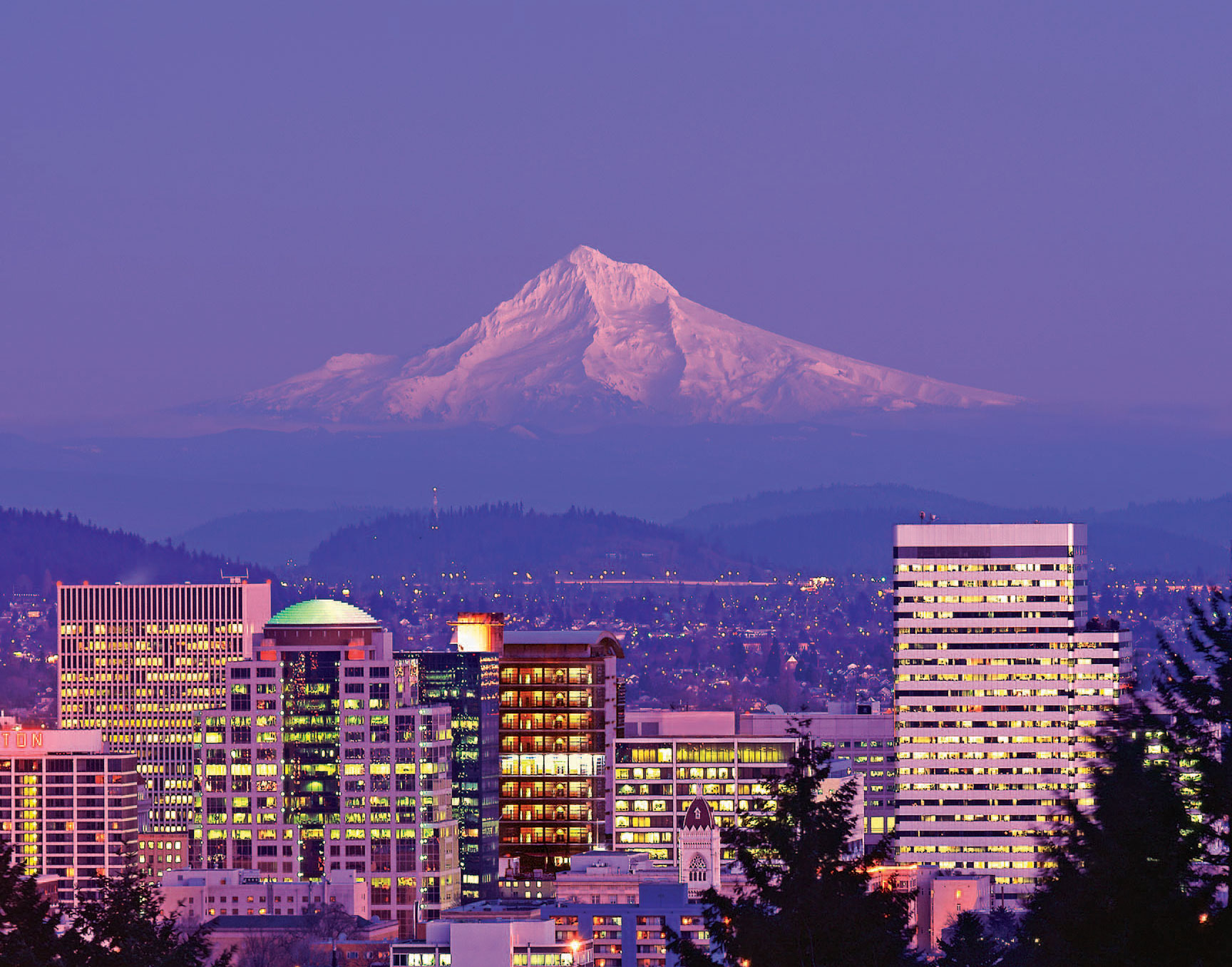
Mount Hood
The most recognizable peaks in Oregon, Mount Hood and its surrounding territory are full of adventures for every season.
During the warm summers, the Mount Hood Railroad takes daily trips from Hood River to Parkdale Station near the base of the mountain, taking riders on scenic routes of the region’s blooming fruit trees. Festivals are also a big part of the green summers in Oregon. With all the fresh flowers, visitors can see the natural beauty of the state. In the festival lineup is Pickathon, a four-day music event at Pendarvis Farm, where bluegrass, Americana, and country artists gather and celebrate roots music.
With mostly melted snow in the summer, the Timberline National Historic Trail becomes a popular hiking trail for backpackers and day hikers. The route circumnavigates the mountain and can take a few days to complete in whole, or hikers can take shorter trails for day trips. In the heart of Mount Hood National Forest, the trail passes through glacial-fed streams and crevices — which provide the surrounding farmlands mineral-rich irrigation from runoff.
Come winter and snow, the area heats up with skiers from around the world visiting the slopes of the longest ski season in North America — Olympic hopefuls and medalists can be found zipping downhill on skis or testing new snowboarding tricks. The historic Timberline Lodge, known for its architectural design, has been hosting guests since opening in 1938 and is open year-round. Hit the slopes during the day or at night, or swing by Mount Hood Skibowl for more night skiing and tubing. If alpine skiing is too much, the area boasts snowshoeing and cross-country skiing routes as well. mthoodterritory.com — Victoria Mechler
The Portland Culinary Experience
Japanese. Iranian. Mexican. French. Local. The Portland, Oregon, food landscape is a culinary Disneyland — not only reflective of the city’s current international makeup but also of its founding. The city is home to renowned chefs who emphasize the local or look beyond the horizon, including Naomi Pomeroy, who before opening her award-winning restaurant, Beast, owned and operated the historically focused Clarklewis. Andy Ricker doles out Thai street food favorites at Pok Pok. And Rodney Muirhead does Texas barbecue at Podnah’s Pit and Tex-Mex at La Taq next door.
Spirited accompaniments are well-represented in the Multnomah Whiskey Library, an exclusive whistle-wetting joint accessible by reservation (for members) or waiting list, home to nearly 1,600 bottles of distilled spirits, most of them whiskey. It’s a brown-water aficionado’s sanctuary. Craft beer lovers are also a happy lot. The Portland Metro area is home to 105 breweries, according to the Oregon Brewers Guild, making it one of the densest craft brewing capitals worldwide. And being the No. 2 state for hops production, Oregon — and Portland — is heavy on the resin-lapped, citrus-twisted India pale ales.
Arguably more diverse than the restaurant and bar scene is the food cart phenomenon making Portland a mobile food vending hot spot. Indeed, the Alder Street pod (a cluster of food carts) that rings a downtown parking lot offers customers everything from gourmet grilled cheeses to Japanese dumplings. Take your order to go and sit a spell in the 12-acre Portland Japanese Garden with meandering streams, intimate walkways, and a picture-perfect view of Mount Hood. Don’t skip Portland’s International Rose Test Garden, the oldest continuously operating rose garden in the United States. Stroll along paths featuring more than 10,000 roses and learn why Portland is known as The City of Roses.
If you’re like us, that’s barely a day’s worth of sightseeing and sustenance, which is why we recommend picking up a handcrafted chocolate bar or two from Cacao and a cortado from Stumptown Coffee Roasters before hopping to your next Portland destination. travelportland.com — José R. Ralat
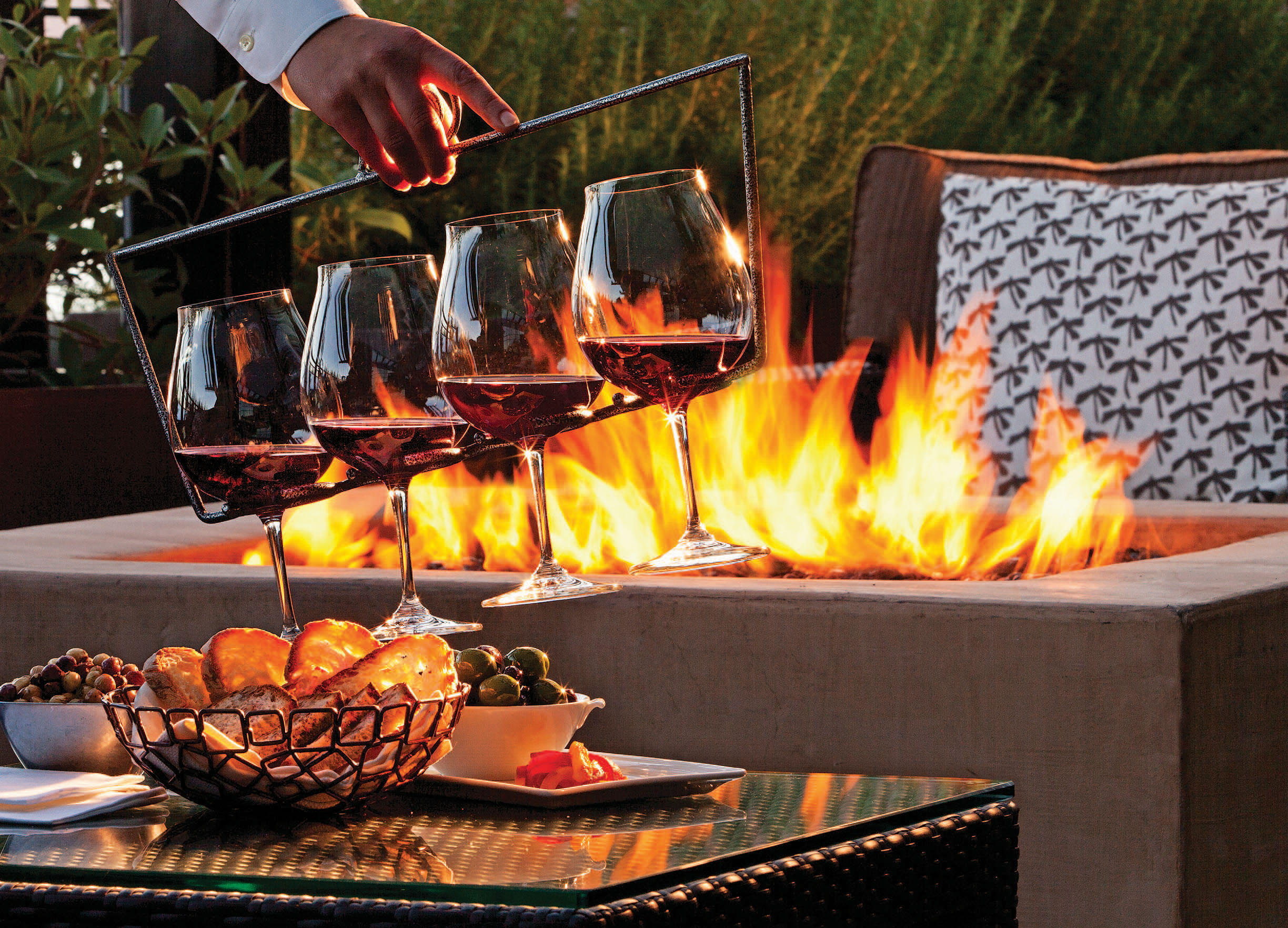
Oregon Wine Country
Portland may be known for its bustling craft beer scene, but Oregon has more to offer than just hops. A little way south of the ale-ing city, the Willamette Valley is rich with vineyards and winemakers fermenting a different crop: grapes.
The hills of wine country are flooded with the delicate pinot noir grapes. Tasting rooms beckon tourists and locals alike to enjoy a glass — or a flight — of the fruity red wine and share thoughts on different flavors that stand out depending on the harvest year.
Amid more than 80 wineries in the Newberg area is a boutique hotel with a vineyard of its own. The Allison Inn & Spa blends naturally into the rolling hills of the countryside, and with its 85 rooms and suites, the hotel offers luxury accommodations, an expansive spa, and a world-class restaurant — not to mention the fine art.
The hotel grounds are decked out with paintings and sculptures by Oregon’s own, including one work by Jay Noller that incorporates soil found on The Allison’s land. The 15,000-square-foot spa offers classic and specialty services, but reservations fill up quickly. At JORY, chef Sunny Jin and his team create flavorful dishes inspired by and made with locally sourced ingredients. The Allison’s garden and hazelnut orchard produce much of the kitchen’s supply, but Jin also has a selection of local purveyors he relies on for other crops. Whether you sit in the main dining area, the open bar peering into the busy kitchen, or one of the private dining rooms, your dining experience is complete with a wine list offering nearly 800 different labels. Choose a glass or bottle for yourself, or ask the server for a recommendation of what will pair best with the meal.
To help guests experience the beauty and flavors of the wine region, the hotel offers a Lexus partnership program, allowing guests to take out a vehicle from the fleet for a few hours, plenty of time to stop by a few of the nearby wineries. theallison.com — Victoria Mechler
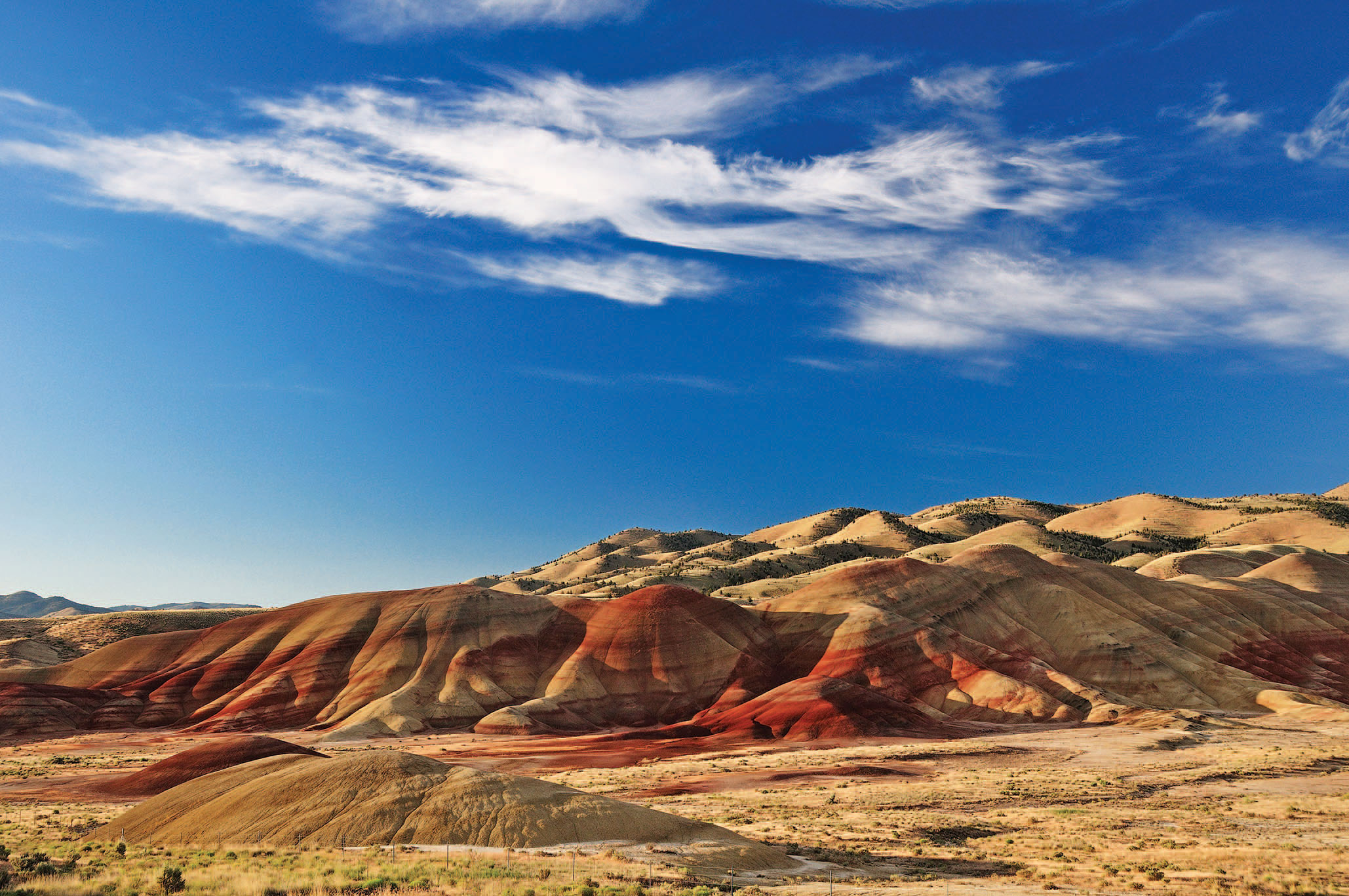
Painted Hills
Rocky hills striped with vivid red and orange and splashed with black and murky brown create a geological wonderland outside the town of Mitchell. The painted rock formation, understandably known as the Painted Hills, is one of three units in the John Day Fossil Beds National Monument in the John Day River Basin.
With their tie-dye-like walls, the Painted Hills have become an attraction for adventure enthusiasts and landscape artists alike. The seasons alter the look of the hills, creating one-of-a-kind experiences on each visit. Winter brings snow drifts, blanketing the hills in white with peekaboo pops of color, and wildflowers bloom in spring as the temperature begins to warm. The hues and tones of the rocks also change seasonally with variations in precipitation levels and the angle of the sun.
The longest trail on the grounds, the Carroll Rim Trail, leads to panoramic views of the painted ridge. The other trails, though shorter in length, lead hikers through the colorful rocks to more breathtaking vistas. The area that was once rich with fossils and the site of paleontological research along the Leaf Hill Trail no longer has visible fossils, but instead offers an exhibit with samples of leaves once found there.
Although camping is not permitted in any of the three units in John Day Fossil Beds National Monument, there are several campgrounds and lodging options nearby. Pack a picnic and spend the day watching the colors transform as the sun passes over the hills. nps.gov/joda — Victoria Mechler
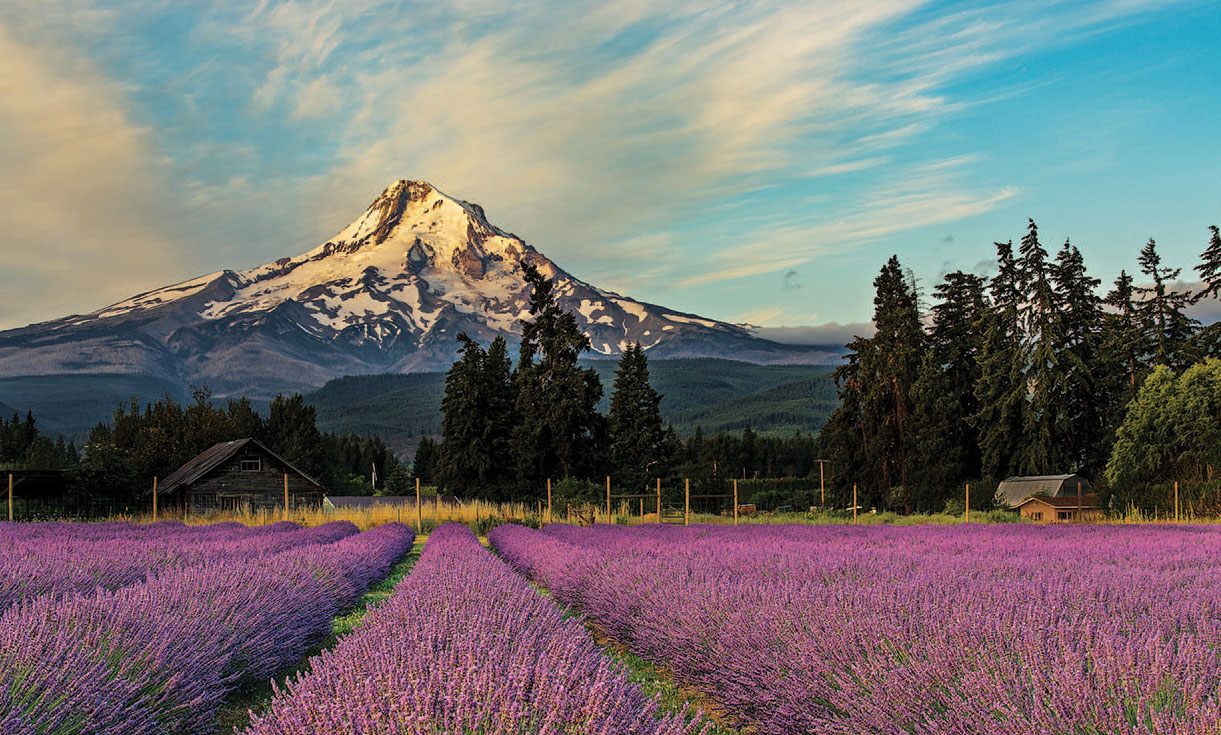
Lavender Farms, Fields, and Festival
When the snow begins to melt in the West, lavender farms in Oregon prepare for their most popular time of year: blooming season. From the time the first purple starts to pop in spring to the time it peaks in summer, visitors from all over the world come to experience picturesque, fragrant fields blanketed in lavender.
Oregon is home to some of the most breathtaking lavender farms in the world, with seven major growing areas: in the northwest, Sunset Corridor, Chehalem Mountain and Yamhill Valley, North Willamette Valley, Central Willamette Valley, Central Oregon, and Hood River Valley; in the southwest, Southern Oregon. One of the best times to visit the lavender regions is the second weekend in July, during the annual Oregon Lavender Farm Tour, put on by the Oregon Lavender Association. Held this year July 8 – 9, it features lavender farms and nurseries all over Oregon, with lavender-related activities like workshops on cooking and healing with lavender and celebrations with music, food, and vendors selling every lavender ware imaginable.
The Southern Oregon region has its own lavender festival — this year June 23 – 25 and July 7 – 9 — when the farms and nurseries on the Southern Oregon Lavender Trail turn out with all things lavender. It’s a summer festival atmosphere that might find you making wreaths, drinking lavender lemonade, and picking your own bouquet.
A couple of notable Oregon lavender farms that are gorgeous destinations unto themselves include Hood River Lavender Farms, three organic farms in the scenic Hood River Valley that grow lavender and produce products like Lavender Cherry Pear Marmalade and lavender shea balm; and the family-run English Lavender Farm, set high in the mountains of the Applegate Valley in Southern Oregon, where they sell products ranging from heat rolls, neck wraps, and sachets to lavender soy wax candles, lavender calming dog collars, and dog shampoo. oregonlavenderdestinations.com — Kristin Brown
The Pendleton Round-Up’s 1910 Room Gourmet Experience
The Indian relay racers rode too hard and fast for my smartphone’s video setting. Their mounts’ hooves sent the rodeo arena’s track dirt into fits and poofs under the metal bars separating guests of the Pendleton Round-Up’s 1910 Room, a gourmet experience, from the thrilling action. Those of us in the 1910 Room were powering through our own feat of athletic prowess: a multi-course meal that paired dishes with an Oregon craft beer, a signature cocktail featuring Pendleton Whisky (the official whiskey of the rodeo), and a local wine with a round of rodeo events — all of the events. It’s a five-hour trackside meal with state- and Western-inspired dishes such as Oregon smoked salmon, silky but substantial, during the tie-down roping and saddle bronc contests.
The chef behind this rodeo mettle-testing feast was Max Germano of Portland. Assisting him were Pendleton High School culinary arts program teacher Kristin Swaggart as sous-chef and a team of Swaggart’s culinary arts students. The results included a caprese salad of golden heirloom tomatoes and pillowy mozzarella capped with ribbons of basil bound by rivulets of balsamic vinegar served during the bareback riding competition. And for the Indian relay racing: a smoked pork chop given a brilliant wash of Pendleton Whisky blackberry-barbecue sauce. This test of our endurance was well-rewarded with a spin on a classic fireside treat, s’mores. In the case of Germano and team, it arrived at our tables composed of house-made graham crackers with a dark chocolate and chile torte, brûléed fresh marshmallow, and a chocolate wine sauce. We savored our victory just as the rodeo cowboys celebrated theirs.
This year’s Pendleton Round-Up, running September 13 – 16, will once again host the 1910 Room with Germano returning alongside Swaggart and her students. When asked how 2017’s menu will differ from last year’s offerings, Germano says, “Last year we did a five-course meal through the rodeo. This year we are moving more toward doing some fun hors d’oeuvres, an appetizer, a main course, and a dessert. All of the dishes we will be serving will be completely different from last year, so anyone who will be there for a second year will be in for an entirely new and unique experience.”
What else can we expect? “This year I am inspired by Western culture being kind of a melting pot of different cultures and ethnicities,” Germano explains. “The dish I am most excited for this year is one of the main course plates: crispy pork spare ribs, a sweet and tangy whiskey-barbecue sauce, braised kale, pickled chiles, and creamy grits.” The meal will be capped with a whiskey and honey cake with a lavender crème anglaise and candied orange.
“Oregon culture definitely plays a part in all of the dishes,” he says. “Being able to get amazing seafood and fish from the coast while bringing in fresh seasonal and local produce is inspiring,” Germano says. And if you haven’t noticed by now, there will be whiskey. Lots of whiskey. In nearly everything. pendletonroundup.com — José R. Ralat
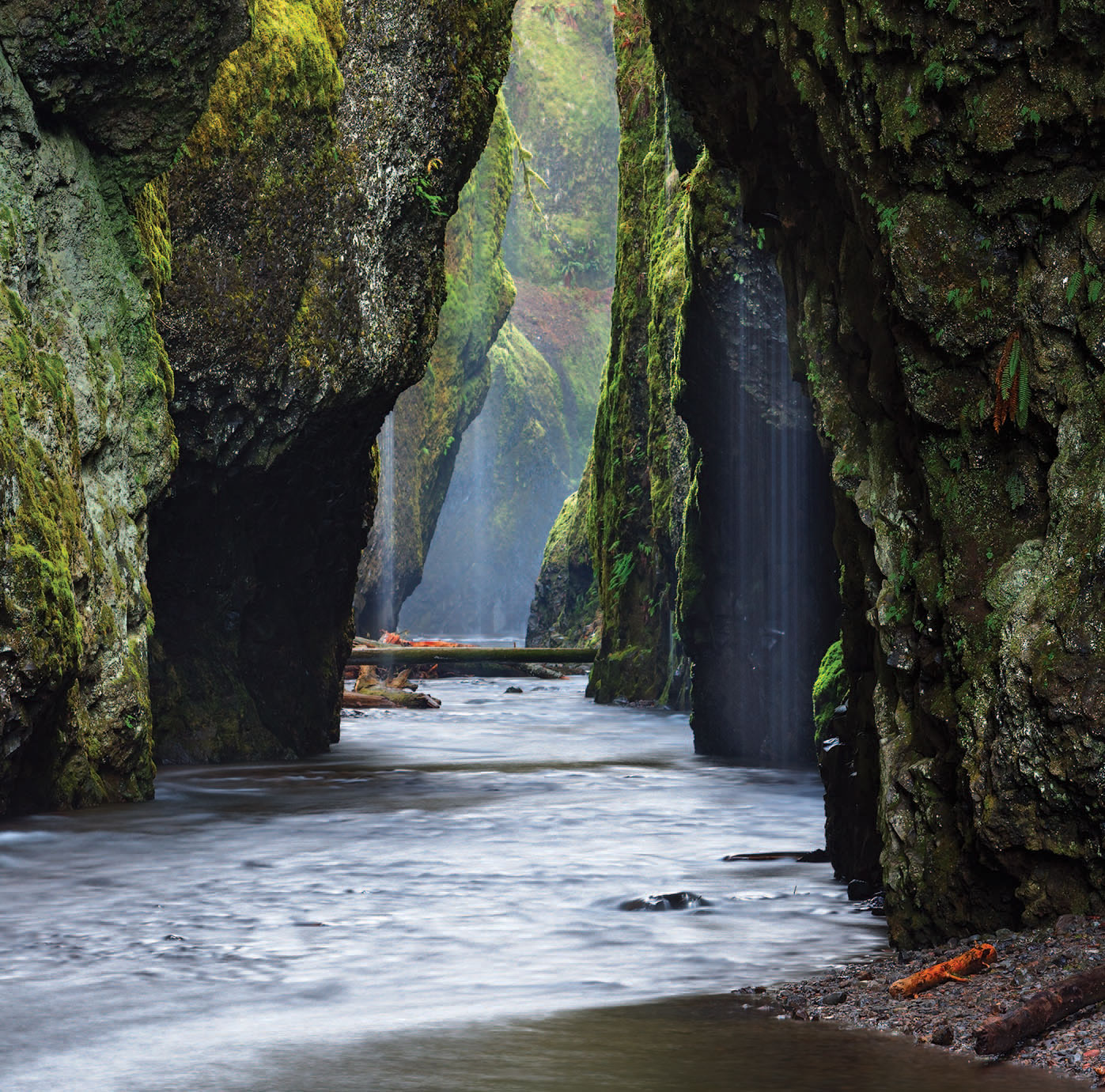
Columbia River Gorge
As you wind your way westward along the southern bank of the Columbia River, the river is everywhere. It’s below you, behind you, and always before you, cutting through more than 80 miles of the Cascade Range’s terrain with a climate that shifts from high desert in the east to temperate rainforest in the west. For more than 13,000 years, humans have gazed upon this landscape that forms the border between Washington and Oregon. They have called it home, have charted it, and they trapped, traded, and settled it during the age of westward expansion.
Today, large swaths are enjoyed as the Columbia River Gorge National Scenic Area, designated as such by President Ronald Reagan in 1986. “The scenic area is important to Oregon and the West for so many reasons,” says Susan Buce of the Columbia Gorge Discovery Center and Museum. “I could go on for hours. But to whittle it down to three things, let’s say the gorge’s Native American history, its environment and ecology, and its outdoor recreation.” She mentions the resurgence of the bald eagle, the importance of salmon and salmon fishing to the Native Americans, Multnomah Falls — the most visited natural recreation site in the Pacific Northwest — the Ice Age Floods National Geological Trail, and the Historic Columbia River Highway.
Outdoors-minded folks are drawn to the hiking. The Balfour-Klickitat Area & Trail is primo bald eagle sighting real estate. Meanwhile Husum Falls on the White Salmon Wild and Scenic River is a Class V waterway best used by experts and with guides. Rather kick back and enjoy the scenery or live the good life in the region? We recommend a leisurely drive on the Historic Columbia River Highway, relax on a riverboat cruise in the Cascade Locks, raise a glass of craft beer at Full Sail Brewing Company, or raise a glass of red at a Columbia Gorge American Viticultural Area winery — because there is something for everyone in the Columbia River Gorge. fs.usda.gov/main/crgnsa — José R. Ralat
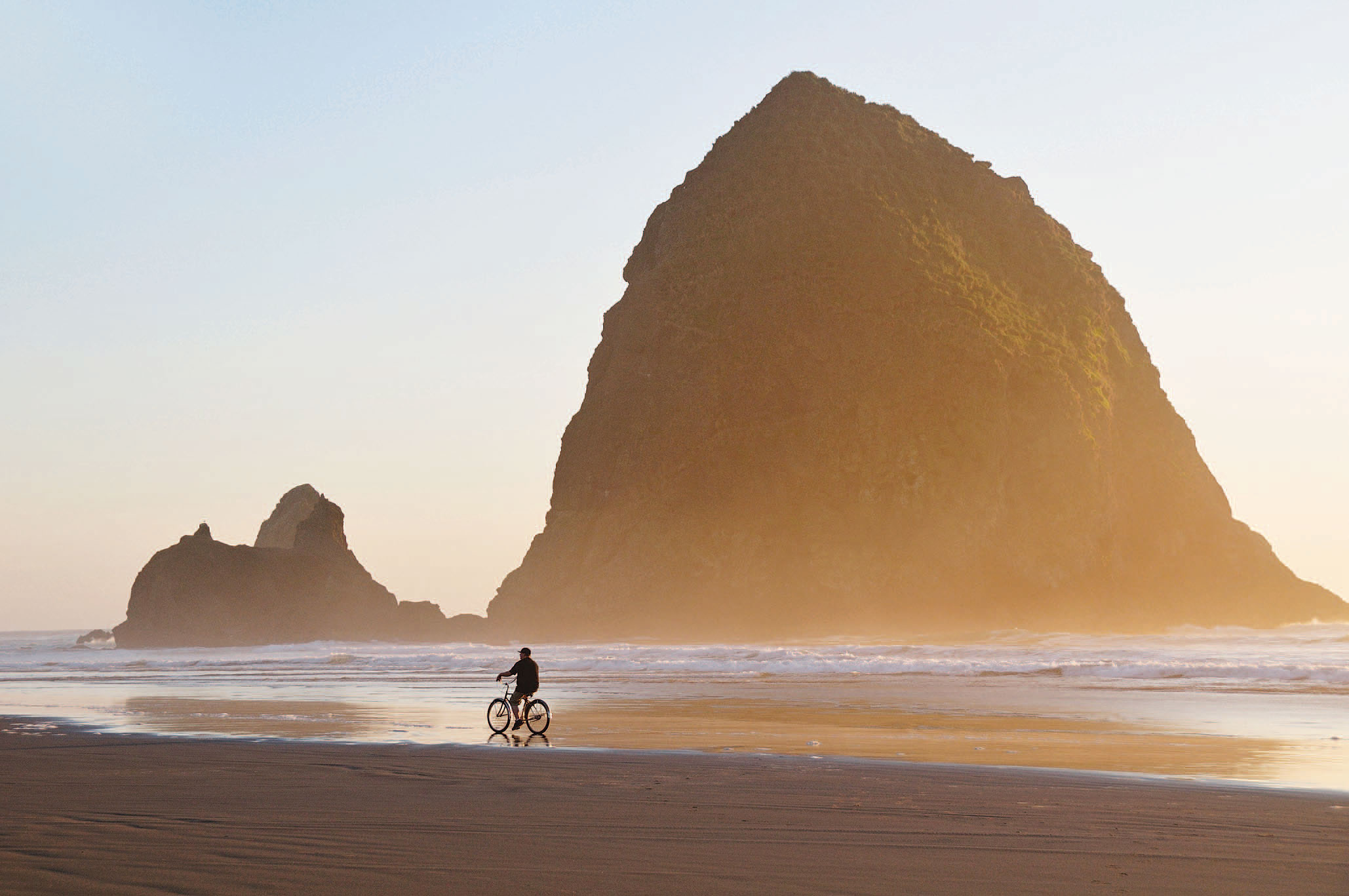
Oregon Coast
You can experience the Oregon coast in all its wondrous windblown glory the easy, relaxing way — with a getaway to any of a dozen or so terrific beach towns — or the energetic, invigorating way — by hiking a portion of the 382-mile Oregon Coast Trail. Whether you loaf it or hike it, you’ll see everything from craggy headlands and sandy beaches to forested corridors and picturesque seaside enclaves.
Out of a dozen or so primo West Coast beach towns handpicked by Sunset magazine, half were in Oregon — and that’s with stiff competition from California and Washington. Making the list from the Beaver State were Bandon, Astoria, Depoe Bay, Cannon Beach, Newport, and Port Orford, each of which has its own character — and its own take on coastal weather. String a few of these Oregon pearls on your West Coast necklace, and sea stacks and tide pools, ice cream cones and saltwater taffy, inns and art galleries, fresh oysters and crab cakes, cliffs and lighthouses, picnics and Frisbees, and, of course, spectacular sunsets are on your itinerary.
No list of Oregon coastal musts would be complete without Yachats, which Frommer’s travel guide founder Arthur Frommer listed as No. 7 of his 10 favorite destinations in the world. A charming town whose Chinook Indian name means “dark water at the foot of the mountain,” Yachats (pronounced YAH-hots) earns its reputation as “the gem of the Oregon Coast” with its stunning location on the water at the base of the Oregon Coast Range, lovely hotels, art galleries, pastel-painted shops, and, 2.3 miles to the south, Cape Perpetua Scenic Area — the highest point on the Oregon Coast and a great spot for walks and getting in on guided naturalist programs through the visitors center.
The U.S. Forest Service entices you to Cape Perpetua thusly: “Towering trees looming through a coastal fog. Frothy surf crashing upon jagged shores. Majestic headlands offering clear views for miles. ... [T]his coastal wonderland — where the forest meets the sea — captivates locals and visitors alike.” Like you needed a hard sell.
Between Yachats and Cape Perpetua, there’s a 3.8-mile stretch of the Oregon Coast Trail called the Amanda Trail. Known for both for its arduous beauty and its even more arduous past, it’s named in honor of Amanda De-Cuys, a blind elderly Native American woman who had escaped deathly conditions on an Oregon reservation and made a life in Coos Bay. Found living there with a white man and their 8-year-old daughter, De-Cuys was forcibly removed by the U.S. military and Indian agents and marched for 10 days and 80 miles — with no eyesight and no shoes — over sharp rocks and forbidding terrain. The section of trail named for her marks the final leg of that treacherous 1864 journey. De-Cuys’ ultimate fate remains a mystery, but stories about the trail never fail to mention that she could be tracked by the blood from her wounded feet.
Oregon owns up to the sad history of violent and unjust treatment of its original inhabitants with a statue of De-Cuys and a sign along the Amanda Trail. It’s a sobering story to consider while intoxicated by all the beauty. oregonhikers.org — Dana Joseph
Oregon Shakespeare Festival
The thrill of Shakespeare and of the theater in general is alive and well in Ashland, just north of Oregon’s southern border, where the Oregon Shakespeare Festival’s been putting on plays — by the Bard and others — since 1935. A Beaver State institution with 83 years and tons of plays (including every single one Will ever wrote) to its playbill credit, it’s not just one of the nation’s oldest theater institutions, but it’s also one of the most important (says no less than The New York Times). And, we might add, most prolific: Running from February to early November, OSF puts on performances six days a week and about 800 annually.
’Tis definitely not your high school production of William Shakespeare here. By its own description, the renowned festival is a “compelling mix of classic, contemporary, and world premiere productions in three unique theaters.” The open-air Allen Elizabethan Theatre is Ashland’s answer to London’s Globe Theatre, but the plays aren’t oh-so-17th-century — they’re very now. This summer through fall, expect everything from Henry IV, Part Two to Disney’s Beauty and the Beast to the musical UniSon, which brings to life the poetry of Pulitzer Prize-winning playwright August Wilson. In 2018, the schedule includes productions as edgy and diverse as Othello; a same-sex Oklahoma!; and Manahatta, by Mary Kathryn Nagle, a citizen of the Cherokee Nation of Oklahoma and executive director of the Yale Indigenous Performing Arts Program.
When you’re not enjoying plays, explore Lithia Park’s 93 acres of forested canyonland around Ashland Creek and other Ashland pursuits like river rafting and tubing, beer and wine tasting, and breakfasting and brunching at local favorite Morning Glory. Whatever you do, pack rain gear because, whatever the weather, the play will go on. osfashland.org
— Dana Joseph
Pillars of Rome
Pioneers on the Oregon Trail saw them rise out of the landscape in southeastern Oregon as they neared the last stretch of their pilgrimage. These unusual 100-foot-high cliffs towered above the sagebrush and mesquite of the valley floor in white clay columns that reminded travelers of Roman ruins, which led to their name, Pillars of Rome. The formation then gave the nearby town of Rome in Malheur County its moniker.
Covering an area approximately 5 miles by 2 miles, the Pillars of Rome attract artists and photographers as the geologic formation changes hues throughout the day with the rising and setting of the sun. If you’re nearby fishing the Three Forks area or hiking the Painted Canyon, be sure to take a detour and snap some awe-inspiring pictures of your own. The chalk and clay bluffs are home to fossils, wildflowers, birds, and various wildlife, but they’re also brittle, so visitors are advised to use caution and keep a respectful distance. Remnants of the old stagecoach highway are still visible there today.
The Pillars of Rome are on the edge of the Owyhee Canyonlands, a scenic, secluded desert region along the Owyhee River. The river got its name from an early spelling of Hawaii in honor of three fur traders from the Pacific Islands who disappeared during an 1819 expedition, likely killed by native Bannocks. Today, it is a destination for white-water rafting, fishing, camping, and other outdoor recreation.
Rome is located near Burns Junction, the intersection of U.S. Highway 95 and State Highway 78. To get closer to the pillars, take the Rome Road (on the opposite side of the highway from the Rome Station) for about 2 miles. Take a right on Old Ion Highway, then a left on Kiger Road. Kiger takes a southward curve, at which point you should begin to see the Pillars of Rome. traveloregon.com — Jesse Hughey
For more on Oregon, pick up the July travel issue.
From the July 2017 issue.












